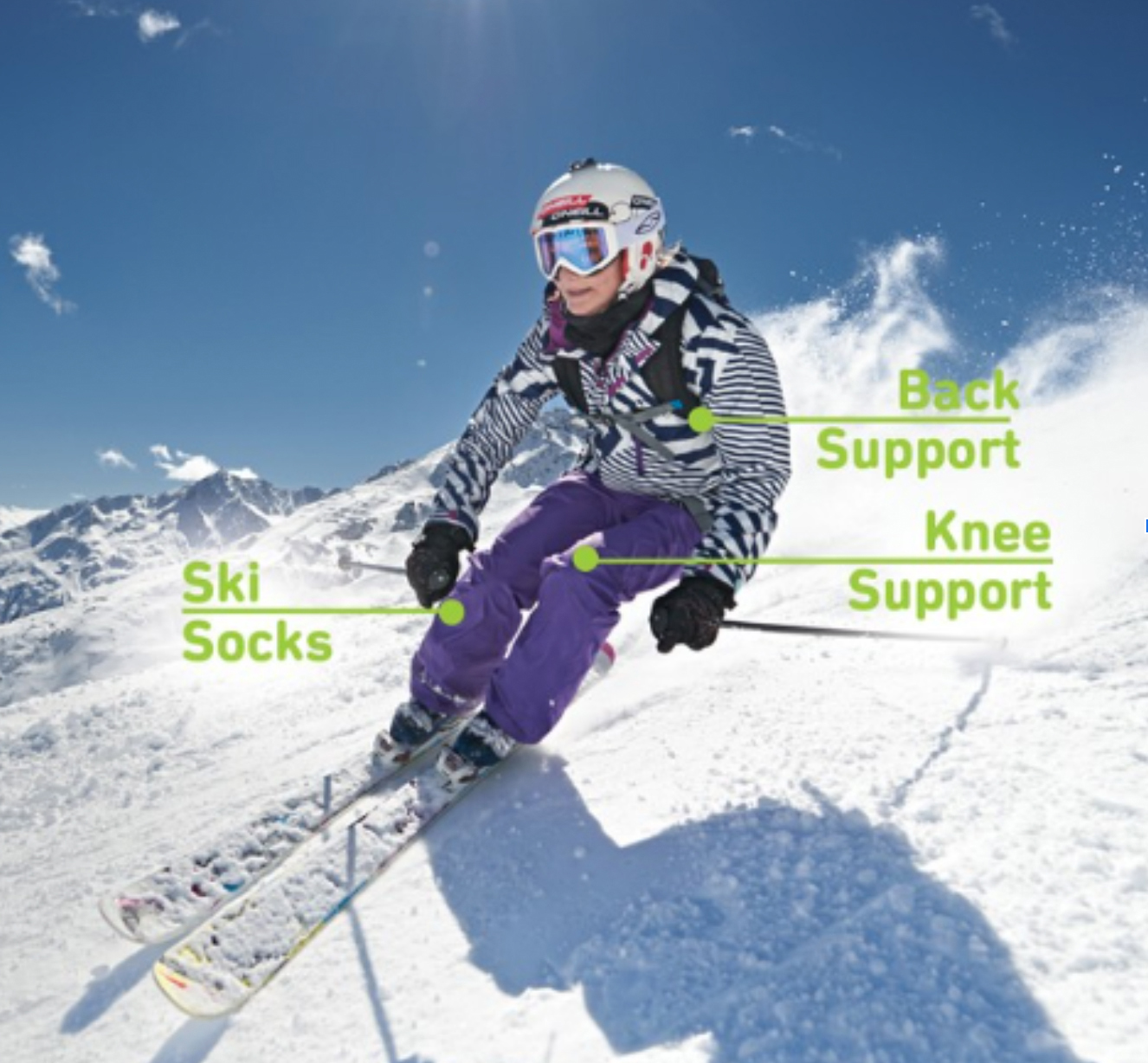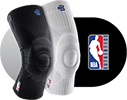Hitting the slopes? Get ready with our choice of exercises that target frequently used areas of the body for skiers.
Many experienced skiers and snowboarders will tell you about the thrill that comes with speeding downhill or freeriding in deep snow. But if you’re prepping for a trip on the slopes, then you’re probably also wondering what you should wear.
To start, various types and layers of gear are meant to keep you dry, warm, safe and comfortable while out in the snow. There are also slight, but meaningful, differences between gear meant for snowboarding and gear meant for skiing. In this guide, we’ll explain what you should wear for your trip down the mountain and how our braces, supports and compression products are essential for limiting the risk of common injuries in skiing and snowboarding.
Differences between skiing and snowboarding gear
Before we get into the details of what you need, it’s important to understand the differences between skiing and snowboarding gear.
Generally, skiing gear is lighter and more tailored to your body than snowboarding gear, which tends to be loose-fitting and larger with more insulation. This is because skiing involves more speed and uniform movements, whereas snowboarding involves more dynamic movements. So, don’t sweat over your snowboarding gear being a little larger than your everyday jackets and pants. There’s a reason for it, and you’ll find that it’s a nice way to stay dry when sitting in the snow or on the chairlift.
What to wear when skiing and snowboarding
When outside during the winter season, you have to be prepared for whatever weather comes your way, which is why finding winter gear that will help you enjoy the snow is so important.
Jackets, pants and the layer principle
Staying dry, warm, safe and comfortable are likely your greatest concerns when looking for the right clothing to wear. Regardless if you’re skiing or snowboarding, following the layer principle is the simplest way to ensure a fun time on the slopes. The layer principle consists of a base layer of clothing, an insulation layer and a shell layer.
In total, each layer includes:
- Ski Performance Compression Socks
- Moisture-wicking, thermal underpants and long-sleeve shirt
- Ski or snowboard pants
- Goggles or sunglasses
- Fleece or wool mid-layer jacket
- Ski or snowboard jacket
- Gloves or mittens
- Helmet and headband/hat
Note: Make sure your jacket or pants is equipped with a rescue transponder, so rescue workers can better locate you in an emergency.
Joint support and protection
Although gloves or mittens keep your hands warm, they don’t offer much protection. For this reason, consider wearing wrist guards to keep your wrists protected during a fall. Many wrist guards, including Bauerfeind’s ManuLoc, can comfortably be worn underneath gloves to keep the wrist in a stable position.
Knee injuries are common in skiing and snowboarding because you’re constantly bending, twisting and turning your way through the snow. Therefore, wearing a knee brace can limit your risk of injury. Bauerfeind’s knee braces stabilize and reduce pain in the knee and can be worn underneath your winter gear.
Your lower back experiences plenty of stress while skiing or snowboarding, and this repeated action can cause strain or injury throughout your run. Bauerfeind’s Sports Back Support, with its soft massage pad and moisture-wicking material, allows maximum freedom of movement and can be worn underneath winter sports clothing. For any ski and snowboard slopestyle, half-pipe or cross, we recommend wearing an additional hard-shell back protector to give your back an extra layer of protection while riding fearlessly.
Helmet
Concussions are one of the most common injuries in skiing and snowboarding, so we recommend wearing a correctly fitting helmet at all times while on the slopes. Goggles are also an important part of your skiing and snowboarding gear, as they protect your eyes from wind, snow and sun glare.
Boots and Bindings
For boots and bindings, the fit is the most important aspect as loose- or tight-fitting boots can result in injury or irritation. You should also look for boots that have a waterproof outer shell to keep your feet warm and dry throughout the day. Before every new season, get your bindings checked and adjusted by a specialist to make sure they are functioning properly to reduce the risk of injury.




